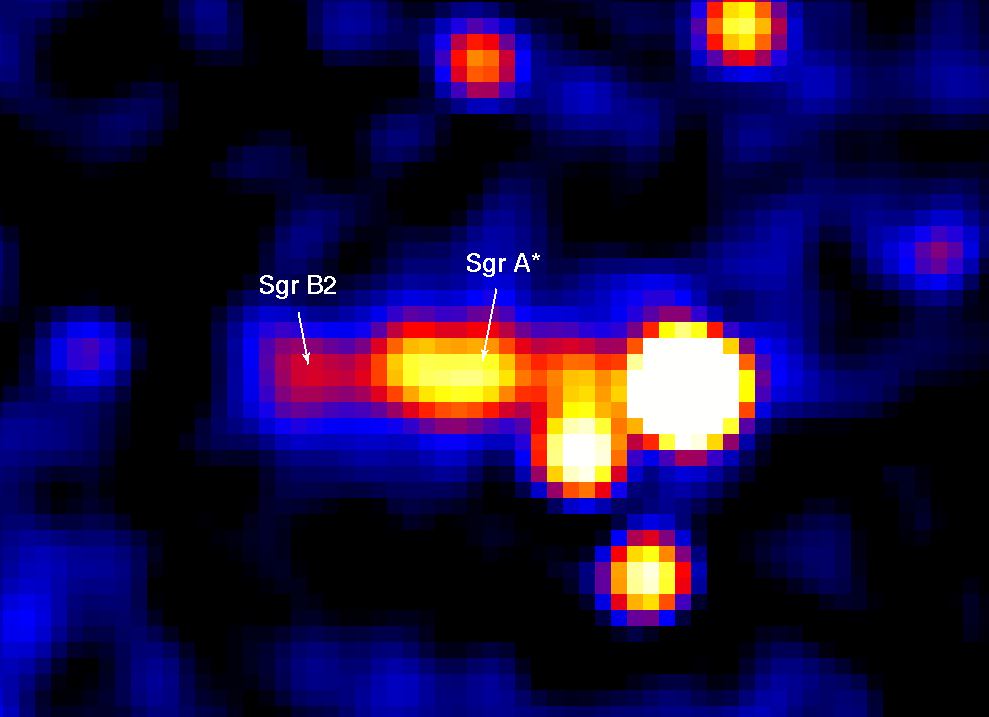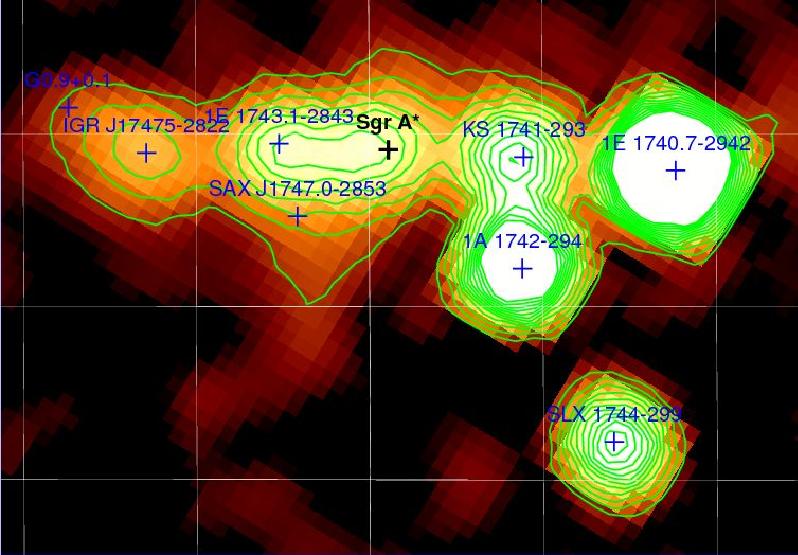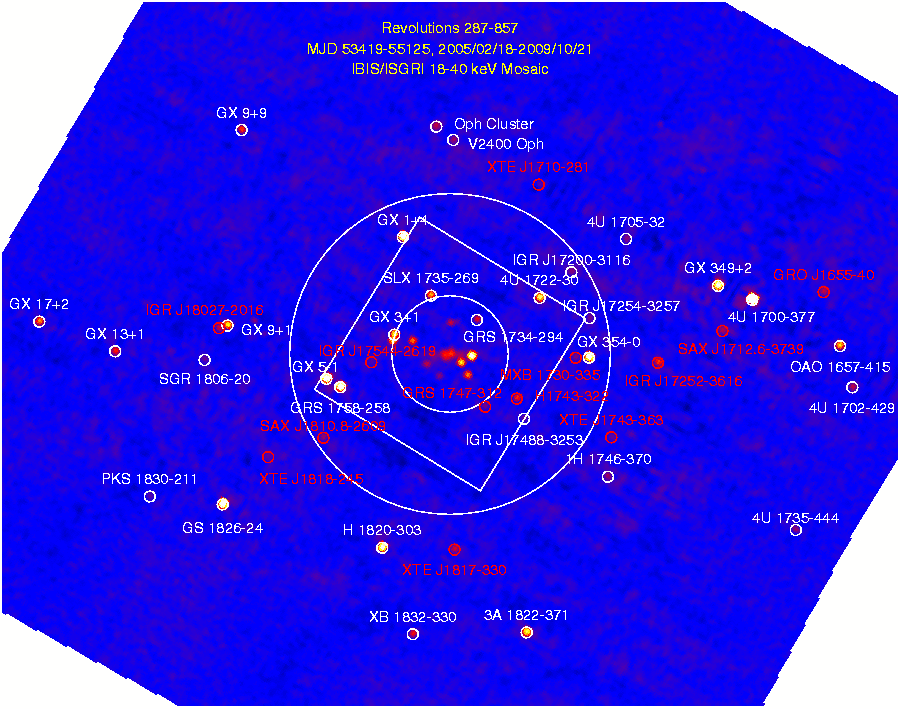Galactic Centre - INTEGRAL
Galactic Centre
The central region of our Milky Way is a major area of interest for INTEGRAL. Besides harbouring the supermassive black hole Sagittarius A* (Sgr A*), it is a rich host of variable hard X-ray and gamma-ray sources as well as extended diffuse emission, e.g. from positron annihilation. Thus it is no surprise that INTEGRAL has summed up more time on this zone than on any other region of the sky.
 |
Detecting past activity of Sgr A*Compared to supermassive black holes in other galaxies Sagittarius A* appears very faint, with an X-ray luminosity of only 1033-34 ergs/s, many orders of magnitude below that of typical AGN. But in the past it appears to have been much brighter on occasion. Analysing INTEGRAL observations from the first two years of the mission, Revnivtsev et al. (2004) concluded that the observed radiation from the molecular cloud Sgr B2 is best explained as Compton scattered and reprocessed radiation emitted 300-400 years ago by Sgr A* in a much brighter state than today. Using a different method based on XMM-Newton observations of iron line emission, Inui et al. (2008) effectively confirmed the earlier result. |
 |
Persistent emissionThe deepest study so far of the faint persistent emission of Sgr A* has been published by Bélanger et al. (2006). In deep IBIS/ISGRI images a weak, non-variable (3σ) source – IGR J17456-2901 – was found with a centroid 1'±1' off the radio position of Sgr A*. The observations indicate that the emission stems from a compact yet diffuse nonthermal emission region. Studying this diffuse emission in more detail is the rationale of one of the ongoing INTEGRAL Key Programmes. |
 |
Galactic Bulge MonitoringSince February 2005, a program exists to monitor the source activity in this region regularly and frequently with INTEGRAL. With a field of view of about 15x15 degrees about ~100 sources are monitored every INTEGRAL orbit (~3 days) for 3.5 hours, whenever the region is visible. As a service to the scientific community the X-ray and gamma-ray light curves and images are made available as soon as possible after the observations have been performed (http://isdc.unige.ch/Science/BULGE/). The findings of the first 1.5 years have been published in Kuulkers et al. (2007). This monitoring has also found the Galactic Center region playing hide and seek. |
